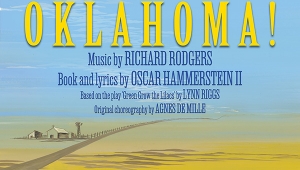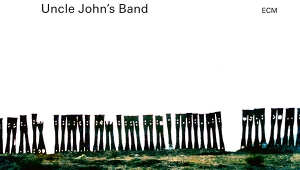| Columns Retired Columns & Blogs |
January 2022 Classical Record Reviews
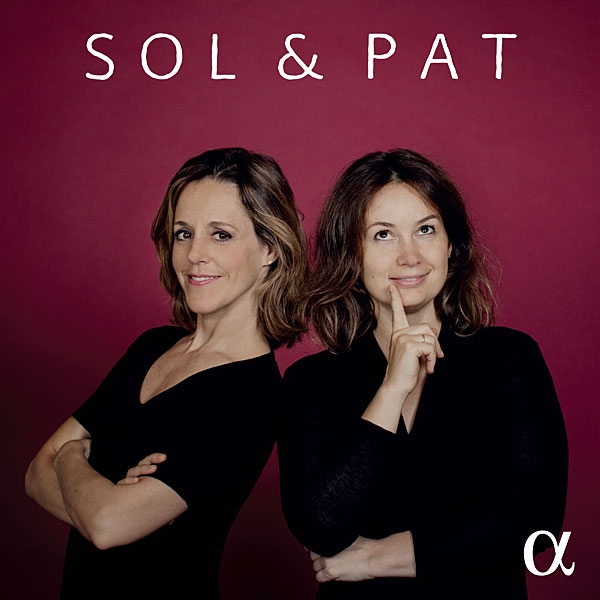
Sol & Pat
Sol Gabetta, cello and Patricia Kopatchinskaja, violin
Alpha757 (24/96 FLAC download). 2021. Peter Laenger, prod. and eng.
Performance ****½
Sonics ****½
Sol Gabetta, cello and Patricia Kopatchinskaja, violin
Alpha757 (24/96 FLAC download). 2021. Peter Laenger, prod. and eng.
Performance ****½
Sonics ****½
For fans of these two highly idiosyncratic artists, the only surprise this album may hold is the music. Others may reel as much at the spontaneous improvisatory nature of the playing as the wildness of the repertoire and the uniqueness of its sequencing.
If there's anything that Leclair's short Tambourin in C major and C.P.E. Bach's Presto, Helm 66 VI have in common with two movements from Jörg Widmann's 24 Duos for violin and cello, Francisco Coll's Rizoma, Marcin Markowicz's Interlude, Julien-François Zbinden's La fête au village, Xenakis's Dhipli Zyia, Ligeti's Hommage à Hilding Rosenberg, Ravel's Sonata in A minor for violin and cello, and Kodály's Duo for violin and cello in D minor, Op.7, it's how they push the envelope. It's a perfect repertoire for longtime friends who have no trouble digging in and letting loose in ways that might terrify more buttoned-down artists. Even the 80-minute program's final arrangement of J.S. Bach's short Prelude No.15 in G major, BWV 860 from The Well-Tempered Clavier, Book 1, sounds thoroughly modern and adventurous in these women's hands.
The conversation between Sol and Pat that replaces traditional liner notes is almost as revelatory as the playing. They texted Coll several times to learn how the piece he composed for them should sound, and they acknowledge the few wrong notes in their first read-through. Markowicz's quirky Interlude, in turn, won their four-minute-max Composition Competition on Facebook. And they were attracted to the "intoxicated frenzy" of Tambourin.
Three thumbs up for this madcap, joy-filled adventure in which, in Sol's words, "New music stimulates one's curiosity, and older music closes the circle."—Jason Victor Serinus

J.S. Bach: Three or One
Fred Thomas, piano
ECM New Series 2640 (CD, download). 2021 Thomas, prod.; Alex Bonney, Elliott Parkin, Rob Sutherland, Pierre Alexandre Tremblay, engs.
Performance *****
Sonics *****
The busy British pianist Fred Thomas has executed several radical reworkings of Bach's music. From postproduction reframing to playing cello suites on the tenor banjo, Thomas has shown himself to be both fearless and deferential in his interpretations. He remains faithful to the source, radical in execution but beholden to the intention. (Thomas is capable of irreverence, though, as a recent, cheeky Richard Wagner project demonstrated.)
In Thomas's ECM New Series debut Three or One, the warmth of his obeisance pays off like never before. The title suggests the methodology: works written for solo performer played either as solo or trio. Most of the two dozen short pieces are drawn from Bach's Orgelbüchlein (which in his liner notes Thomas pronounces as amongst Bach's "most concisely radical creations") and arranged for piano, violin, and cello, a grouping that only became popular in the generations following Bach.
But these aren't simple transcriptions. Bach's music is famously open to interpretation, with such indicators as tempo markings and even instrumentation often left off his manuscripts. Thomas accepts those liberties as a jazz musician might—he's spent time in both the jazz and classical realms—without trying to make a jazz record. The musicians—violinist Aisha Orazbayeva and cellist Lucy Railton—move with comfort and ease, making the record more session than recital. The fact that the three have known each other since they were teenagers no doubt lends to their toasty renderings.
The trio pieces are interspersed with Thomas alone at the piano, and the set is sequenced into a convincing, hour-long suite by ECM founder Manfred Eicher. The rich clarity for which his label is famous makes Three or One an easy, joyful listen.—Kurt Gottschalk
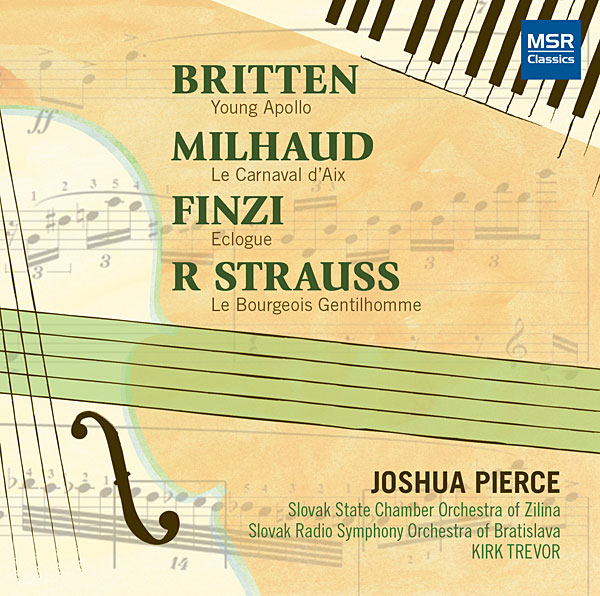
Britten, Young Apollo; Milhaud, Le Carnaval d'aix; Finzi, Eclogue*; Richard Strauss, Le bourgeois gentilhomme: Suite
Joshua Pierce, piano, Žilina Chamber Orchestra, *Slovak Radio Symphony/Kirk Trevor
MSR Classics MS 1756 (CD). 2021. Emil Niznansky, prod.; Hubert Geschwandtner, eng.
Performance *** (Finzi *****)
Sonics *** (Finzi ****½)
The performance of Finzi's Eclogue, this program's least familiar item, is first-class. Joshua Pierce intones the flowing chordal start with clear, limpid tones; shortly thereafter, the strings float in easily around the piano. This opening builds to an impassioned climax; there follows a gently rocking passage, and then a marchlike section that turns stoic. The soloist maintains a limpid clarity throughout, the strings under Kirk Trevor's direction are shapely and nuanced, and it all reproduces with a lovely, airy transparency.
The rest of the program goes to the decidedly lesser Žilina Chamber Orchestra. The Strauss suite, its piano part obbligato rather than concertante, offers fine moments in the more lightly scored movements, or where the liquid, sensitive oboe and clarinet take the lead. The finale builds effectively, and Trevor gets expressive playing in the Lully minuet, the Courante, and Cleonte's entrance. But the cautious Overture is genial rather than sparkling, and the brasses in The Fencing Master positively lumber, though Pierce still manages to convey a sense of poise. The climaxes tend to turn opaque as they expand.
The Milhaud reminds me of Poulenc without the outward sophistication, colored by off-kilter dissonances. The opening is crisp; the Isabella and Corviello sections are searching and pensive; and the last six, bright-eyed movements end things cheerfully. But the orchestra frequently sounds backwardly balanced, wind soloists excepted, and Pierce's runs only shimmer in the higher octaves: The lower reaches are tubby. The latter is also true in the Britten, where the strings, while neat, sound utterly mystified. I wanted to like this issue better.—Stephen Francis Vasta
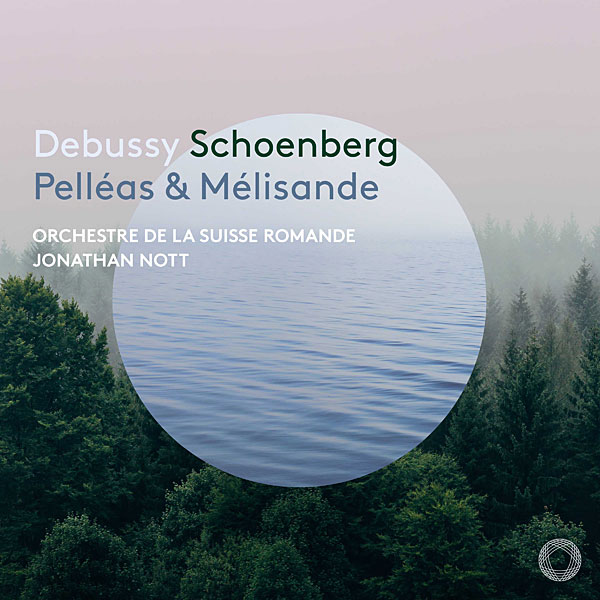
Debussy: Pelléas et Mélisande: Suite (arr. Nott); Schoenberg: Pelleas und Melisande
Orchestre de la Suisse Romande/Jonathan Nott
Pentatone Music PTC5186782 (CD). 2021. Renaud Loranger, Erdo Groot, prods.; Groot, Karel Bruggeman, and Jean-Marie Geijsen, engs.
Performance *****
Sonics *****
Standard Pelléas programs feature helpings of Sibelius and Fauré. Nott eschews both, linking his suite from Debussy's opera with Schoenberg's tone poem.
Nott's suite attempts to depict not the opera's plot, which is barely there, but the emotional trajectories of its three principals. Listeners who don't know the opera well can still luxuriate in the composer's shimmering, lambent sonorities. Changes of texture, or sustained woodwind tones (probably Nott's minimal interpolations), signal scene changes. The first Interlude is marked "A forest"; still, I was startled at the kinship with Wagner's Forest Murmurs.
Schoenberg's more overtly dramatic take on Pelleas emulates a Richard Strauss tone poem, casting it in four "movements"—again noted in the track listing, again not readily audible. The contrast with Debussy is stark. Schoenberg's textures are dense, even in the playful Scherzo, and an anxious, disturbed undercurrent propels even his most expansive passages. "The Slow Movement" (its actual title) brings an impassioned Straussian dynamism, but the interplay of motifs in the "Recapitulatory Finale" is straight out of Schoenberg's own Transfigured Night.
Nott limns both scores with commanding assurance and a keen eye on the structure. His clean shaping, carefully sculpted cadences, and small-scale surges in the Debussy are particularly fetching; he projects Schoenberg's textures, no matter how full, in perfect balance. The Geneva players are more polished than their early-stereo forebears. The woodwinds are adept and sensitive; the horn choir infuses the Debussy with warmth. Save for a single peaky trumpet note in the Schoenberg, it's a true feast for the ears in Pentatone's sumptuous reproduction.—Stephen Francis Vasta

Fanny Mendelssohn, String Quartet; Felix Mendelssohn, String Quartets 2, 6
Takács Quartet
Hyperion CDA 68330 (CD). 2021. Judith Sherman, prod.; Mike Quam, eng.
Performance *****
Sonics ****½
The big surprise is Fanny Mendelssohn's Quartet: Hyperion released another recording just two years ago, but here it sounds a stronger piece. The Takács, with its firm bowings, full-bodied tone, and precise intonation, find stature in it that eluded the estimable Nash Ensemble. The first movement, melting and incisive by turns, still sounds like a warmup for the second, a bouncy scherzo relieved by legato and contrapuntal passages. The Romanze, more intricate than I'd remembered, still sings simply; violinist Edward Dusinberre's pinpoint tuning makes his high lines soar. And the players smoothly elide the moto perpetuo finale's bustling first theme into the second's accompaniment, maintaining buoyancy as the arching phrases build in the home stretch. It's rather impressive.
These two of Felix's quartets are, of course, known quantities and fine works, though hearing them together points up some of his compositional tics, particularly his reliance on short, repeating motifs to produce agitation. Still, there's much to admire. In Op.80 (Quartet 6), the Takács players produce waltzlike inflections in the scherzo's strongly marked hemiolas; in the finale, the Gypsy-flavored opening moves into the lyrical second group without breaking stride. Op.18 (Quartet 2) is perhaps less imaginative, but I enjoyed the players' solemn intoning of the opening, choralelike theme, and the way they don't sacrifice tonal firmness in the Intermezzo's scurrying Allegro di molto. Both slow movements are carefully gauged, landing just this side of sentimental.
As usual with Hyperion, the players are clothed in a handsome yet unobtrusive ambience. I'm not sure whether the playing or the recording is to blame for a slightly edgy treble, but a small volume cut sets things to rights.—Stephen Francis Vasta
- Log in or register to post comments












